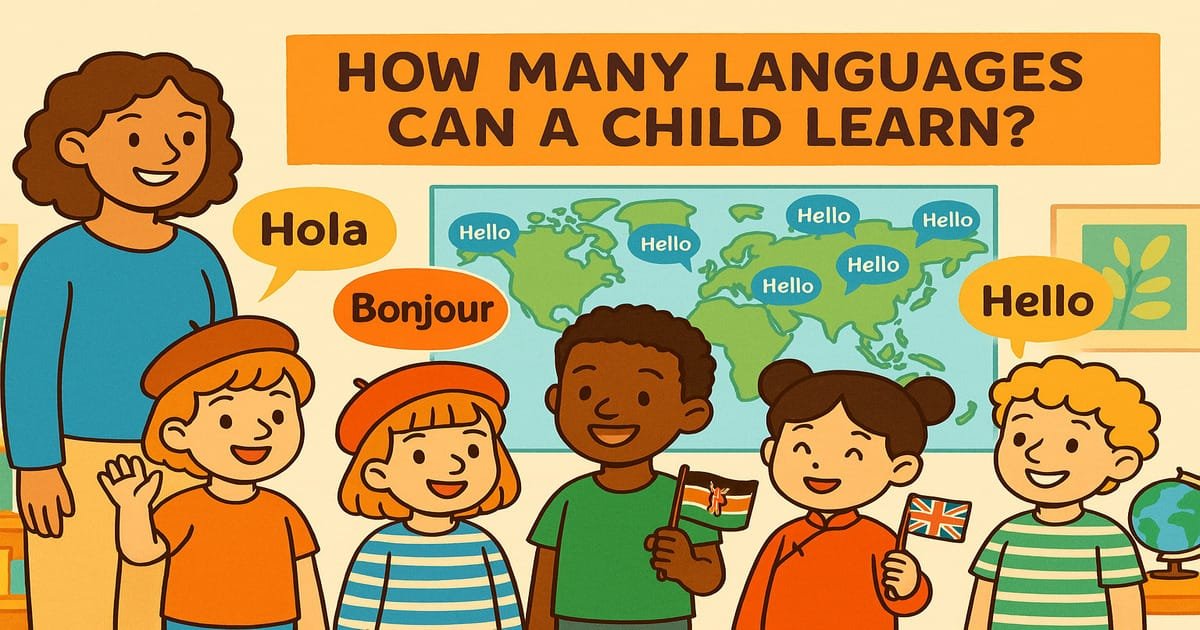The Trinity is a complex concept that can be challenging to explain, especially to children. However, it is possible to break it down in a simplified and understandable way. By using age-appropriate language and creative illustrations, we can help children grasp the concept of the Trinity.
The belief in the Trinity states that there is one God who exists as three distinct persons: God the Father, God the Son, and God the Holy Spirit. While this may seem difficult to comprehend, we can use practical examples to make it more relatable to children.
In this guide, we will explore various strategies and approaches to teaching the Trinity to kids. From embracing the mystery to using visual aids, we will equip you with the tools you need to explain this concept effectively. Together, we can make the Trinity accessible and understandable for children.
Key Takeaways:
- Teaching the Trinity to children requires simplification and creativity.
- Embrace the mystery of the Trinity while emphasizing its importance.
- Use age-appropriate analogies and illustrations to aid understanding.
- Explore the Celtic Trinity Knot as a visual representation of the Trinity.
- Remember that God is incomprehensible, and encourage children to seek Him.
Embracing the Mystery of the Trinity
When it comes to discussing the Trinity with children, it’s important to acknowledge the mystery that surrounds this complex concept. No metaphor or explanation can fully capture the depth and complexity of God’s nature. Instead of attempting to fully understand it, we can embrace the mystery and explore it with a sense of awe and wonder.
Teaching children about the Trinity doesn’t mean providing them with a comprehensive understanding, but rather helping them grasp the concept in a way that is meaningful to their young minds.
“The Trinity is like a beautiful puzzle that we can spend a lifetime piecing together, always discovering something new and amazing about God.”
By embracing the mystery of the Trinity, we create space for curiosity and exploration. It allows children to develop a deeper sense of wonder and reverence for God, fostering a stronger relationship with Him.
The Doctrine of the Trinity Explained
In order to educate kids about the Trinity, we need engaging ways to explain this complex concept in a way they can understand. The doctrine of the Trinity is the belief that there is one God who exists in three distinct persons – the Father, the Son, and the Holy Spirit. Each person is fully God and yet distinct from one another.
“God the Father, God the Son, and God the Holy Spirit are all part of the Trinity. They are different, but they are all God.”
This belief is rooted in biblical passages that reveal the Father as the Creator, the Son as the Savior, and the Holy Spirit as the Helper. Let’s explore each person of the Trinity and their roles:
GOD THE FATHER
God the Father is the Creator of the universe and everything in it. He loves us and cares for us like a loving parent.
GOD THE SON
God the Son, also known as Jesus, came to earth to save us from our sins. He taught us how to love one another and showed us what it means to live a life dedicated to God.
GOD THE HOLY SPIRIT
The Holy Spirit is God’s presence with us today. He helps us to understand God’s Word, guides us in making the right choices, and gives us the power to live a life that pleases God.
Understanding the Trinity can be challenging, but by using age-appropriate language and examples, we can help children grasp these concepts. Let’s explore some engaging ways to explain the Trinity to young ones.
TEACHING ABOUT THE TRINITY
1. Use visual aids: Introduce the concept of the Trinity by showing children an image like the one above. The image can help them visualize the idea of three distinct persons who are all part of one God.
2. Relate it to everyday objects: Use analogies to explain the Trinity. For example, just as water can exist as liquid, ice, or steam, God exists as three persons. Emphasize that while the forms are different, it’s still water. Similarly, the Father, Son, and Holy Spirit are distinct persons, but they are all God.
3. Tell Bible stories: Share stories from the Bible that involve all three persons of the Trinity. For example, the story of Jesus’ baptism highlights the presence of God the Father, God the Son, and God the Holy Spirit.
4. Encourage questions: Be open to children’s questions about the Trinity and provide simple, age-appropriate answers. Encourage them to explore their faith and seek a deeper understanding of God.
By engaging children through visual aids, relatable analogies, Bible stories, and open discussions, we can help them grasp the concept of the Trinity. It’s an opportunity to nurture their faith and lay a foundation for a personal relationship with God.
Analogies and Illustrations of the Trinity
While analogies and illustrations may not fully capture the mystery of the Trinity, they can provide helpful ways to conceptualize and explain it to children. Using relatable examples can make the concept more accessible and engaging for young minds. Here are some commonly used analogies:
- Egg: The Trinity can be compared to an egg, which has three parts – the shell, the white, and the yolk. Just as all three parts make up the egg, the Father, the Son, and the Holy Spirit make up the Trinity.
- Water: Another analogy is water, which can exist in three different states – liquid, solid (ice), and gas (steam). Despite being in different forms, it is still water. Similarly, the Trinity is composed of three persons, each with their unique role, yet they are all one God.
- Shamrock: A shamrock with three leaves joined together is often used to represent the Trinity. Each leaf represents one person of the Trinity – the Father, the Son, and the Holy Spirit. Together, they form one unified entity.
- Man: Comparing the Trinity to a man is another way to help children understand the concept. A man can have different roles in life – a father, husband, and son. Although he plays different roles, he is still the same person. In the same way, the Father, the Son, and the Holy Spirit are distinct persons within the Trinity.
It’s important to acknowledge the limitations of these analogies and emphasize that they are simply tools to assist in understanding the Trinity. They provide a starting point for children to grasp the idea of three persons within one God, but ultimately, the Trinity remains a profound mystery that goes beyond our full comprehension.
To further illustrate the concept, here’s an image of a shamrock representing the Trinity:
The image of the shamrock showcases the analogy of the three leaves coming together as one, visually representing the Father, the Son, and the Holy Spirit forming the Trinity.
Teaching the Trinity with the Celtic Trinity Knot

The Celtic Trinity Knot, with its three interlocking loops, is an excellent visual aid for explaining the concept of the Trinity to children. Each loop represents one person of the Trinity – the Father, the Son, and the Holy Spirit. By tracing the lines of the knot, children can see how each person is distinct yet connected, forming a unity.
When discussing the Trinity with kids, the Celtic Trinity Knot can serve as a tangible representation of this complex belief. Here are some tips for using the Celtic Trinity Knot to teach children about the Trinity:
- Introduce the Symbol: Start by explaining to children that the Celtic Trinity Knot is an ancient symbol that represents the three persons of the Trinity – the Father, the Son, and the Holy Spirit. Show them the symbol and point out its three interlocking loops.
- Explain the Meaning: Help children understand that each loop represents a different person of the Trinity. Just as the loops are distinct, the Father, Son, and Holy Spirit are distinct from one another.
- Highlight the Unity: Emphasize that although the Father, Son, and Holy Spirit are distinct, they are all connected within the Trinity. Just as the loops of the Celtic Trinity Knot are intertwined and inseparable, the three persons of the Trinity are united as one God.
- Trace the Lines: Encourage children to trace the lines of the Celtic Trinity Knot with their fingers as they reflect on the three persons of the Trinity. This tactile experience can help reinforce their understanding and make the concept more tangible.
Using the Celtic Trinity Knot as a visual aid can make the abstract concept of the Trinity more accessible to children. It allows them to see the interconnectedness of the Father, Son, and Holy Spirit while grasping the concept of three distinct persons within one God.
Through this visual representation, children can begin to comprehend the mystery of the Trinity in a way that is relatable and engaging. The Celtic Trinity Knot serves as a powerful tool for facilitating discussions and fostering a deeper understanding of this fundamental Christian belief.
God Is Incomprehensible and Beyond Our Understanding
While we can know and experience God, it’s important to teach children that we will never fully understand Him. God is infinite and beyond our human comprehension. This humbling truth should inspire awe and wonder in their hearts as they explore the concept of the Trinity.
We can encourage children to seek God, learn from the Bible, and grow in their relationship with Him. By doing so, they can develop a deeper understanding of His character and His love for them.
As children learn about the Trinity, it’s essential to emphasize that even though we can’t fully grasp God’s nature, He reveals Himself to us through His Word and the experiences we have with Him. This knowledge should fuel their curiosity and desire to know Him more.
“The more we learn about God, the more we realize how much we don’t know. That’s what makes Him so amazing!”
Encourage children to ask questions and explore the vastness of God’s love and power. Remind them that faith involves trusting in what we can’t completely understand, knowing that God’s ways are higher than our own.
Teaching Tips
- Use age-appropriate language and examples to help children relate to the concept of the Trinity.
- Offer simple analogies that can aid their understanding, such as using the relationship between the sun, sunlight, and warmth to illustrate the unity and distinctiveness within the Trinity.
- Engage children in interactive activities that allow them to explore the three persons of the Trinity individually and as a unified whole.
- Invite children to share their thoughts and questions about the Trinity, fostering an open and safe space for discussion.
“Encourage children to ask questions and explore the vastness of God’s love and power.”
| Tip | Description |
|---|---|
| 1 | Use visual aids like pictures, diagrams, or the Celtic Trinity Knot to illustrate the concept of the Trinity. |
| 2 | Read Bible stories that highlight the roles and interactions of the Father, Son, and Holy Spirit. |
| 3 | Encourage children to pray and ask the Holy Spirit for wisdom and understanding. |
| 4 | Invite children to share their own experiences of God’s presence and work in their lives. |
Conclusion
Teaching the Trinity to children is both a challenging and rewarding journey. By embracing the mystery of this complex concept and using age-appropriate analogies, we can help children develop a foundational understanding of the Trinity. Utilizing visual aids, such as the Celtic Trinity Knot, further enhances their comprehension by visually representing the interconnectedness of the Father, Son, and Holy Spirit.
However, it is important to remember that the concept of the Trinity is ultimately beyond complete human understanding. We must emphasize to children that God’s nature is infinite and awe-inspiring. Encouraging them to explore the Bible and cultivate a sense of wonder and awe in their relationship with God can deepen their understanding and spiritual growth.
As we embark on the journey of teaching the Trinity to children, let us be patient, humble, and open to their questions and curiosity. By instilling a sense of wonder and encouraging a personal connection with God, we can nurture a lifelong foundation of faith and understanding of the Trinity for our children.
FAQ
How can I explain the Trinity to a child?
Explaining the Trinity to a child can be challenging, but there are ways to simplify the concept. Using analogies like an egg or water can help them understand the idea of three distinct persons in one God.
What is the mystery of the Trinity?
The Trinity is a mystery beyond our complete understanding. While we can know and experience God, we will never fully comprehend His nature. Embracing this mystery can help foster a sense of awe and wonder in children’s relationship with God.
What is the doctrine of the Trinity?
The doctrine of the Trinity states that there is one God who exists in three distinct persons – the Father, the Son, and the Holy Spirit. Each person is fully God and yet distinct from one another.
How can I use analogies to explain the Trinity to children?
Analogies like an egg or water can help children conceptualize the Trinity. While these analogies have limitations, they serve as tools to assist in understanding the three persons in one God.
How can I use the Celtic Trinity Knot to teach the Trinity?
The Celtic Trinity Knot, a symbol with three interlocking loops, represents the Father, the Son, and the Holy Spirit. Children can trace the loops to see that each person is distinct but connected and united as one.
Why is God incomprehensible and beyond our understanding?
God is infinite and beyond our human comprehension. While we can seek to know and understand Him, we will never fully grasp the depths of His nature. This truth humbles us and invites us to have a sense of wonder and awe in our relationship with Him.





